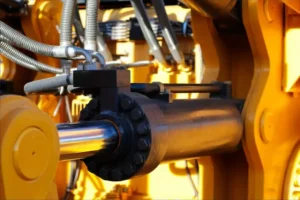Heat treatment is a crucial process in materials science, primarily used to alter the physical and mechanical properties of materials, especially metals. The process involves controlled heating and cooling to achieve desired characteristics such as increased strength, hardness, ductility, or resistance to wear. Here’s a detailed analysis of the stages of the heat treatment process.
Heating (Austenitizing)
- Objective: To heat the material to a specific temperature where its structure changes to austenite (in steels).
- Process:
- The material is gradually heated in a furnace.
- The heating rate depends on the type of material and the desired properties.
- The temperature is usually above the critical temperature (Ac3 for hypoeutectoid steel and Ac1 for hypereutectoid steel).
- Considerations:
- Uniform heating to avoid thermal stress.
- The temperature and holding time are critical to ensure complete transformation to austenite.
Soaking
- Objective: To hold the material at the austenitizing temperature to ensure uniform temperature throughout the material.
- Process:
- The material is kept at the target temperature for a predetermined period.
- The duration depends on the size and composition of the material.
- Considerations:
- Adequate soaking time to ensure homogeneous structure.
- Avoidance of overheating, which could lead to grain growth.
Cooling (Quenching)
- Objective: To rapidly cool the material to transform austenite into martensite or other structures to achieve desired mechanical properties.
- Process:
- The material is rapidly cooled in a quenching medium (water, oil, air, or specialized quenchants).
- The cooling rate must be sufficient to bypass the pearlite or bainite transformation range.
- Considerations:
- Avoiding quench cracking due to thermal shock.
- Selecting an appropriate quenching medium to control the cooling rate.
Tempering
- Objective: To reduce brittleness and improve toughness of the quenched material.
- Process:
- The material is reheated to a temperature below the critical point and held for a specified time.
- The temperature and duration depend on the desired balance between hardness and toughness.
- Considerations:
- Careful control of temperature to achieve the desired tempering effect.
- Multiple tempering cycles may be used for precise property control.
Aging (for certain alloys)
- Objective: To achieve precipitation hardening in certain alloys (e.g., aluminum, titanium, and some stainless steels).
- Process:
- The material is heated to an intermediate temperature and held for an extended period.
- This allows for the formation of fine precipitates that strengthen the material.
- Considerations:
- Proper control of aging temperature and time to optimize the distribution and size of precipitates.
Annealing (optional)
- Objective: To soften the material, improve ductility, and relieve internal stresses.
- Process:
- The material is heated to a specific temperature, held for a period, and then cooled slowly, usually in the furnace.
- Considerations:
- Ensuring uniform heating and slow cooling to achieve a homogeneous, stress-free structure.
Normalizing (optional)
- Objective: To refine the grain structure and improve the uniformity of microstructure and properties.
- Process:
- The material is heated to a temperature above the critical point, held to achieve uniform austenite, and then air-cooled.
- Considerations:
- Ensuring uniform heating and air cooling to obtain fine, uniform grains.
Key Points to Consider in Heat Treatment
- Material Composition: Different alloys and metals respond differently to heat treatment processes.
- Temperature Control: Accurate control of temperatures during each stage is crucial for desired results.
- Cooling Rates: The choice of cooling rate and medium significantly affects the final properties.
- Microstructural Changes: Understanding the phase transformations and microstructural changes during heating and cooling is essential.
- Mechanical Properties: The desired mechanical properties (hardness, toughness, strength) guide the selection of heat treatment parameters.

By carefully managing these stages, manufacturers can tailor the properties of materials to meet specific performance criteria for various applications.







